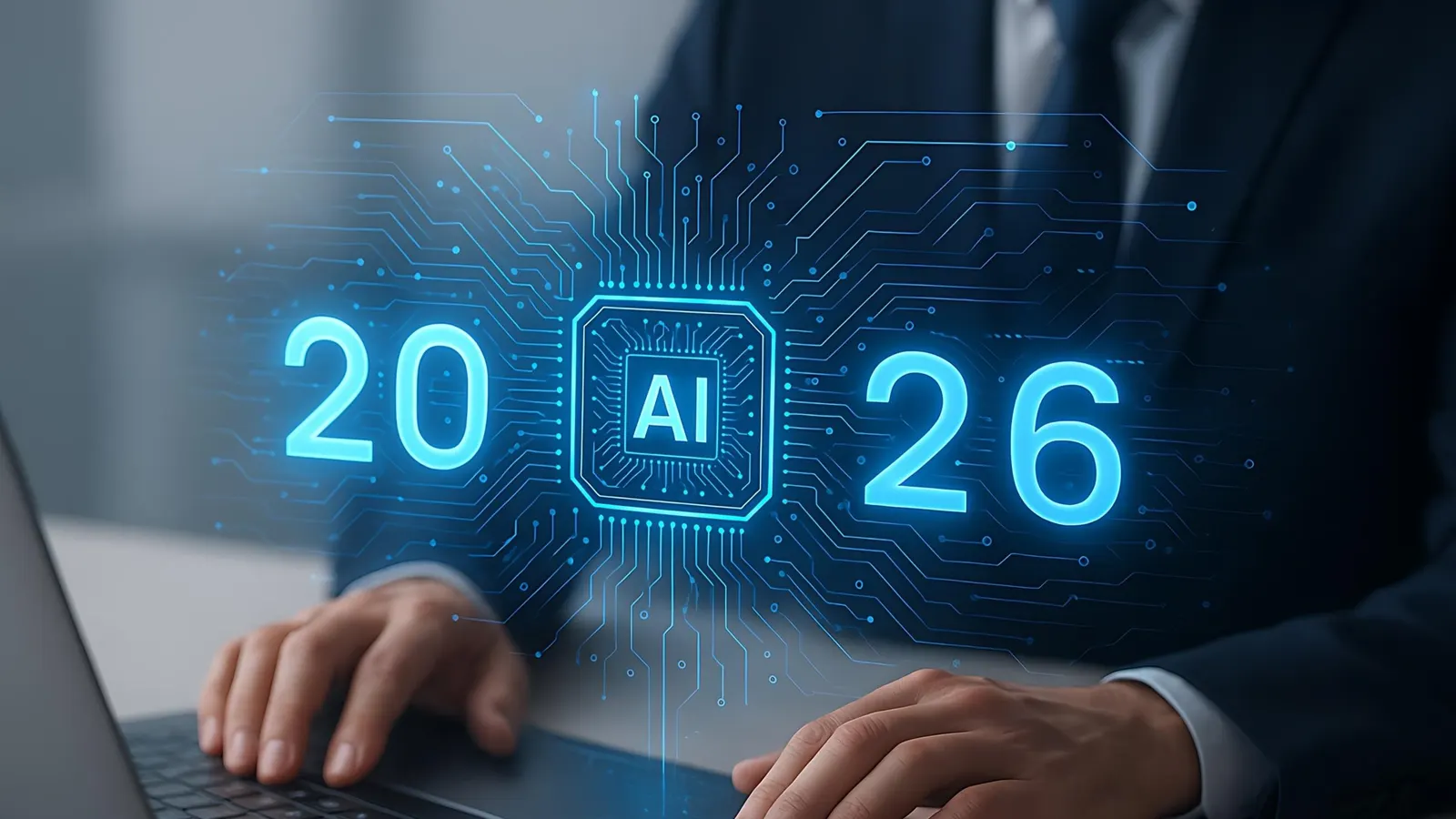By Bernard Marr,Contributor
Copyright forbes

In 2026, AI is expected to reshape nearly every aspect of our lives, with transformative trends ranging from autonomous agents in daily tasks to significant disruptions in global geopolitics. The next few years will be pivotal in how we work, interact with technology, and manage societal challenges.
Adobe Stock
As I predicted last year, 2025 was the year that AI very much entered everyday life. Across work, play, learning, and just about everything we did, its impact was impossible to ignore.
So where do we go from here? I believe that in 2026, we’ll start to see the long-term effects begin to manifest.
This will continue to create fantastic opportunities, from improving standards of healthcare and education to boosting scientific discovery to simplifying and streamlining our lives in any number of ways.
At the same time, society will be forced to face up to problems such as its growing energy costs and social challenges, as well as issues around trust, privacy, and regulation.
Is the bubble going to burst? Perhaps, but so did the dot-com bubble back in 2000, and it didn’t significantly slow the adoption of the internet. Certainly, from an economic perspective, there will continue to be demand for companies that have gone all-in on AI to demonstrate that it can really drive growth and value.
But for most of us, the most consequential narratives will involve the lasting and meaningful ways in which AI is reshaping the fabric of everyday life.
So with all of that in mind, here are what I believe are the trends that will be top of the agenda as we move into the second half of the decade.
MORE FOR YOU
1. Agents In Everyday Life
Agentic AI has undoubtedly been the hot buzzword of 2025, and 2026 will be the year that the impact of these autonomous, action-taking assistants really takes shape. Imagine ChatGPT, but as well as answering questions and generating content, it can take on day-to-day tasks like ordering groceries, making travel arrangements, or even interacting with smart home devices to manage household tasks. In the workplace, AI will graduate from offering assistance to coordinating and delivering complex projects, communicating with external stakeholders and systems to achieve mid and long-term goals.
2. The Synthetic Content Crisis
According to one prediction, in 2026, as much as 90 percent of online content could be synthetically generated. We’ve already seen it used to spread disinformation and threaten democratic processes, but even when it isn’t created for dishonest purposes, its sheer volume often threatens to drown out authentic human voices. Synthetic content undoubtedly has its place, such as analyzing and pulling insights from data that moves too quickly for humans to deal with. But when it’s used to replace human insight and experience, it lacks authenticity and risks swamping us in a stream of generic, low-value content. In 2026, the challenge for those with genuinely valuable experiences to share will be to find ways to ensure their creativity and human voice rise beyond the tide of “AI slop” and remain visible.
3. The Future Of Work
In 2026, the long-term impact that AI and automation will have on the way we work will begin to coalesce, as new jobs emerge and, inevitably, some old ones are lost. Roles will change as knowledge workers offload routine and administrative work to AI and agents, and we will get more clarity on the value that emerging roles like prompt engineers, AI integration specialists and ethics experts will bring to organizations. On the flip side, we’re also likely to see ongoing redundancies and job losses as some companies seize the opportunity to reduce headcount and the expenses that come with it.
4. AI In The Physical World
This trend covers the increasing influence of AI on the physical systems and mechanisms that constitute the world around us. It includes autonomous vehicles, which will undoubtedly become increasingly prevalent, as well as humanoid robotic workers that will take on physical labor in warehouse, construction and healthcare settings, and the web of interconnected devices that makes up the increasingly sprawling “internet of things”. In 2026, AI isn’t just powering apps on our phones and the software we use on PCs. As regulatory and security guardrails mature, it’s sharing our homes, industries and workplaces, becoming a tangible presence in our world, and redefining our interactions and relationships with all forms of technology.
5. AI-Driven Geopolitical And International Trade Disruption
By now, world governments are well aware of the advantages that AI will create on the international stage, from everything to economic output to their capacity to wage war. Synthetic content is widely used in propaganda intended to influence elections, and trade restrictions on AI hardware are leveraged to limit the competitiveness of rival economies. With the exception perhaps of nuclear arms, there is no precedent for a technology with this much potential to disrupt the global balance of power. World leaders know this well, and 2026 will see further manipulation of markets and supply chains as they attempt to control the spread of this technology and the data that fuels it.
6. Invisible AI
As AI increasingly becomes a part of everyday life, it will take on many properties of other era-defining shifts like mechanization, electrification or the rise of telecommunications. This means it will increasingly be something that we take for granted, rather than point out when we identify its impact. Children born in the last decade are unlikely to think it’s anything other than entirely normal to have natural, human-like conversations with devices and machines they use every day, to the point it’s no longer a “thing”, it’s just how things are.
7. Everyday AI In Healthcare
This year, an everyday healthcare essential that’s been part of every doctor’s kitbag for over 100 years received a major upgrade thanks to AI. The new stethoscope analyzes heart rhythms in order to detect issues like heart disease in seconds. Innovations like this represent the integration of AI into everyday, commonplace healthcare procedures and practices. With AI already routinely used to assist doctors in diagnosing illness, monitoring patient recovery and developing new medicines, it’s likely to be just one more way that it will move out of the trial phase and into general clinical use in 2026.
8. Energy-Efficient AI
The skyrocketing energy demands of AI are becoming impossible for even the most enthusiastic of advocates to ignore. With the U.S. Department of Energy predicting that by 2028, the amount of energy used by data centers will increase to the point that they consume 12 percent of the nation’s electricity, the need to find cleaner and more sustainable sources will be more urgent than ever. In 2026, this will be a core element of the discourse around AI. This will involve AI innovation, for example, driving efficiency across systems used to power and cool millions of processors, crunching their way through mountains of data. But it will also involve innovative ways of generating the energy in the first place, such as the mini nuclear power plants being created by Rolls-Royce.
As AI continues to evolve at a rapid pace, 2026 will be the year when these emerging technologies start to reshape the very fabric of our daily existence. From revolutionizing industries to creating new ethical dilemmas, the changes ahead will offer both opportunities and challenges. For businesses, workers, and individuals alike, staying ahead of these AI trends is crucial for survival and success in the coming decade.
Editorial StandardsReprints & Permissions



